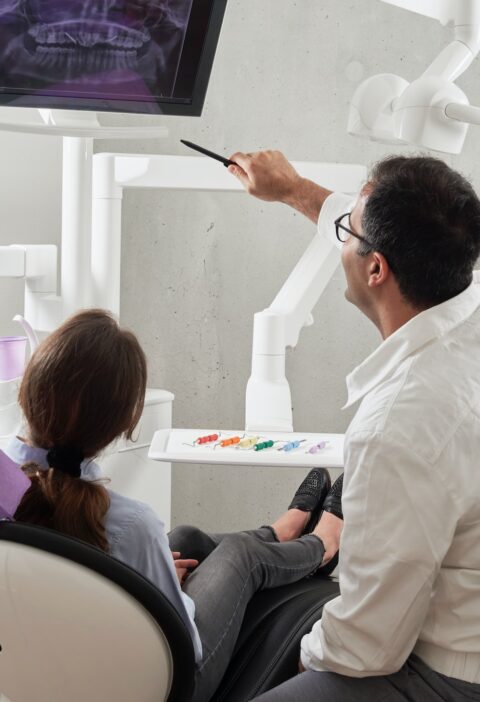Are you tired of constantly reaching for your glasses every morning? Fed up with the hassles of cleaning smudges and dealing with fogged-up lenses? If so, you’re not alone. Millions of people around the world rely on glasses or contact lenses to correct their vision.
But what if there was a way to bid farewell to these visual aids for good? Enter LASIK – a revolutionary procedure that promises freedom from eyewear and a clearer vision of the world around you. Discover the reasons to have LASIK and what to expect.
The Glasses Conundrum: A Daily Struggle
For many of us, wearing glasses is a daily ritual. From the moment we wake up to the time we go to bed, they’re a constant companion. But let’s face it – they can be a real hassle. Whether it’s dealing with scratched lenses, uncomfortable frames, or simply misplacing them, glasses come with their fair share of frustrations.
And let’s not forget about contact lenses – another popular option for vision correction. While contacts offer some benefits over glasses, such as a wider field of vision and freedom from frames, they come with their own set of drawbacks. From the hassle of putting them in and taking them out to the risk of eye infections, contact lenses aren’t without their drawbacks.
Introducing LASIK: A Game-Changer in Vision Correction
Enter LASIK – short for Laser-Assisted In Situ Keratomileusis – a revolutionary procedure that has transformed the lives of millions by offering a permanent solution to vision problems. In a nutshell, LASIK works by reshaping the cornea – the clear, dome-shaped surface that covers the front of the eye – using a laser, thereby correcting refractive errors such as nearsightedness, farsightedness, and astigmatism.
How LASIK Works: The Lowdown
So, how exactly does LASIK work its magic? Let’s break it down:
- Initial Evaluation – The LASIK journey begins with a thorough eye examination to determine whether you’re a suitable candidate for the procedure. Factors such as the shape and thickness of your cornea, as well as the overall health of your eyes, will be assessed.
- Creating the Flap – Once you’ve been deemed a suitable candidate, the first step of the procedure involves creating a thin flap on the surface of the cornea using a femtosecond laser or a microkeratome. This flap is then folded back to reveal the underlying corneal tissue.
- Reshaping the Cornea – With the corneal flap in place, a specialized excimer laser is used to precisely reshape the underlying corneal tissue according to your unique prescription. This step is crucial in correcting the refractive errors that cause blurry vision.
- Flap Replacement – Once the cornea has been reshaped, the flap is carefully repositioned back into its original position, where it adheres naturally without the need for stitches.
The Benefits of LASIK: Seeing Clearly, Without Glasses
So, what are the benefits of undergoing LASIK? Here are just a few reasons why so many people are bidding farewell to their glasses and opting for this life-changing procedure:
- Improved Vision – LASIK offers the promise of clearer, sharper vision without the need for glasses or contacts.
- Quick Recovery – Most patients experience rapid recovery following LASIK, with many returning to their normal activities within a day or two.
- Long-lasting Results – Unlike glasses or contacts, which require regular updates and replacements, the results of LASIK are permanent for the majority of patients.
- Freedom and Convenience – Say goodbye to the hassles of glasses and contacts – with LASIK, you’ll enjoy the freedom to pursue activities without the restrictions of eyewear.
Is LASIK Right for You? Common Concerns Addressed
While LASIK offers a multitude of benefits, it’s natural to have some concerns before undergoing any surgical procedure. Here are a few common questions and concerns about LASIK, addressed:
Will it Hurt?
LASIK is performed under local anesthesia, meaning you won’t feel any pain during the procedure. Some patients may experience mild discomfort or a sensation of pressure, but this typically subsides quickly.
What about Risks and Complications?
Like any surgical procedure, LASIK does carry some risks, including dry eyes, glare, halos, and undercorrections or overcorrections. However, serious complications are rare, and the vast majority of patients achieve excellent outcomes.
How Long is the Recovery Period?
Most patients experience rapid recovery following LASIK, with many returning to their normal activities within a day or two. You may be advised to avoid strenuous activities and swimming for a short period following the procedure, but overall, the recovery process is relatively quick and straightforward.
Conclusion: Embracing a Life without Glasses
In conclusion, LASIK offers a life-changing solution for those seeking freedom from the constraints of glasses and contacts. With its ability to correct a wide range of vision problems and its long-lasting results, LASIK has transformed the lives of millions around the world, allowing them to see the world more clearly and confidently than ever before. So why wait? Say goodbye to glasses and hello to a brighter, clearer future with LASIK.







